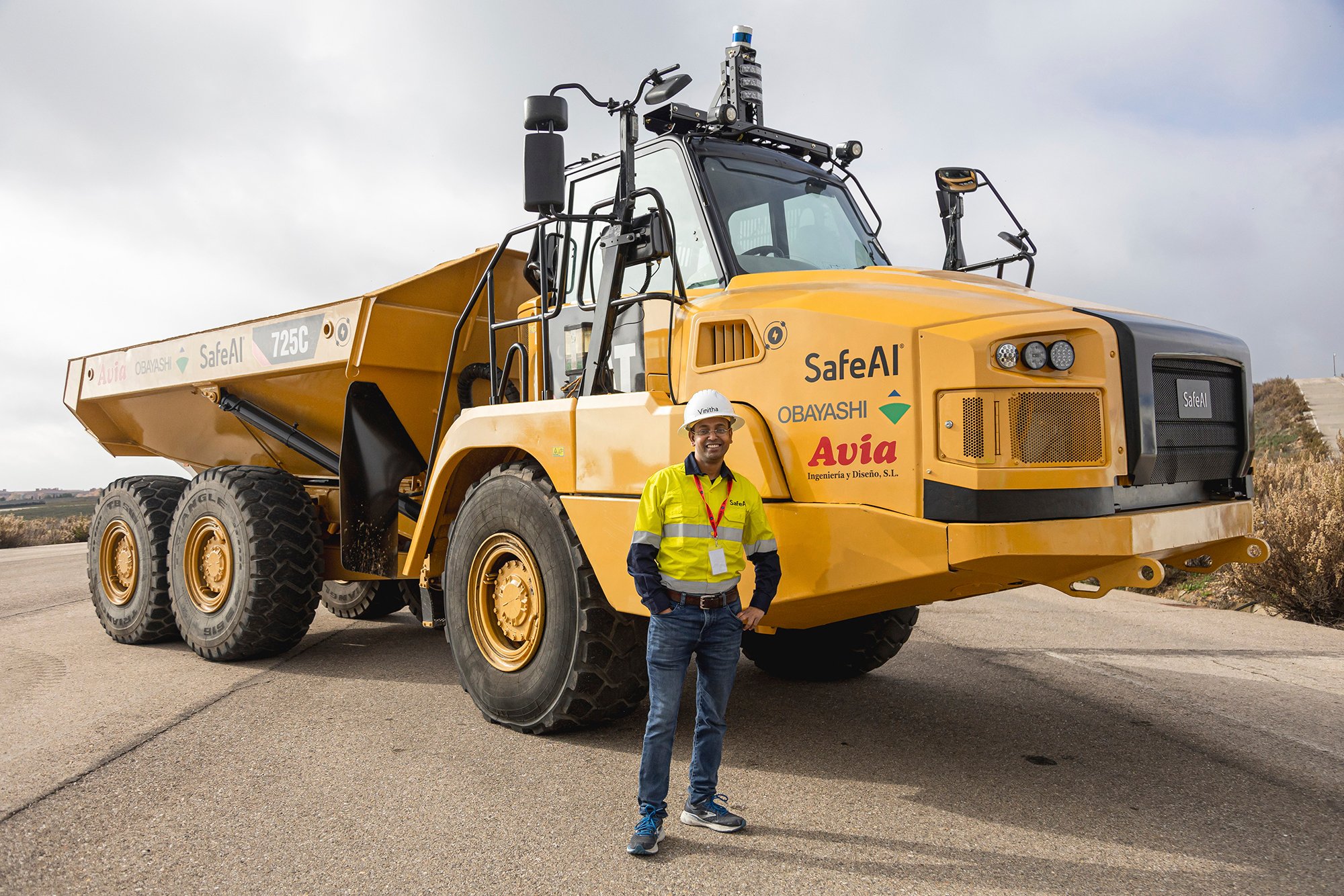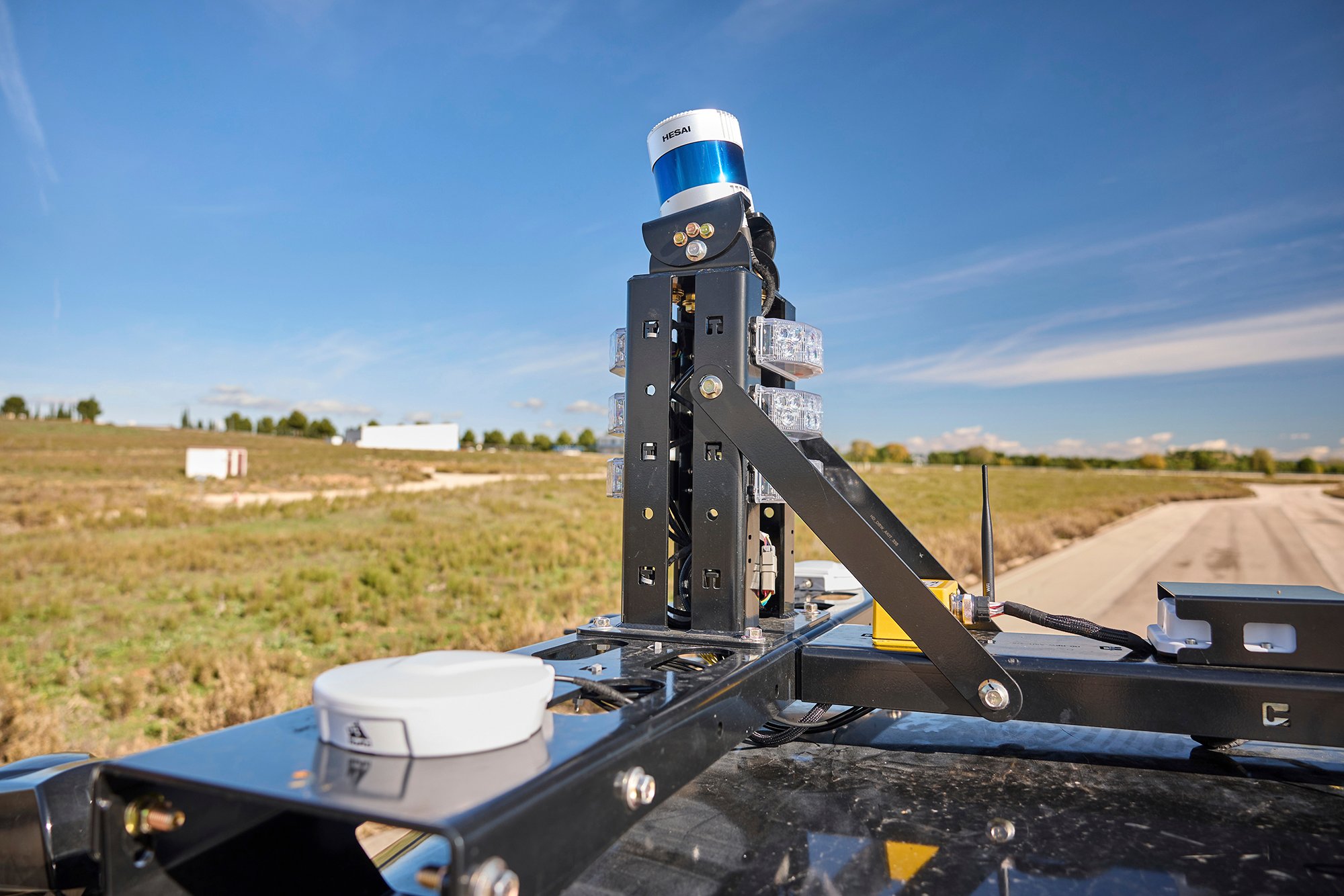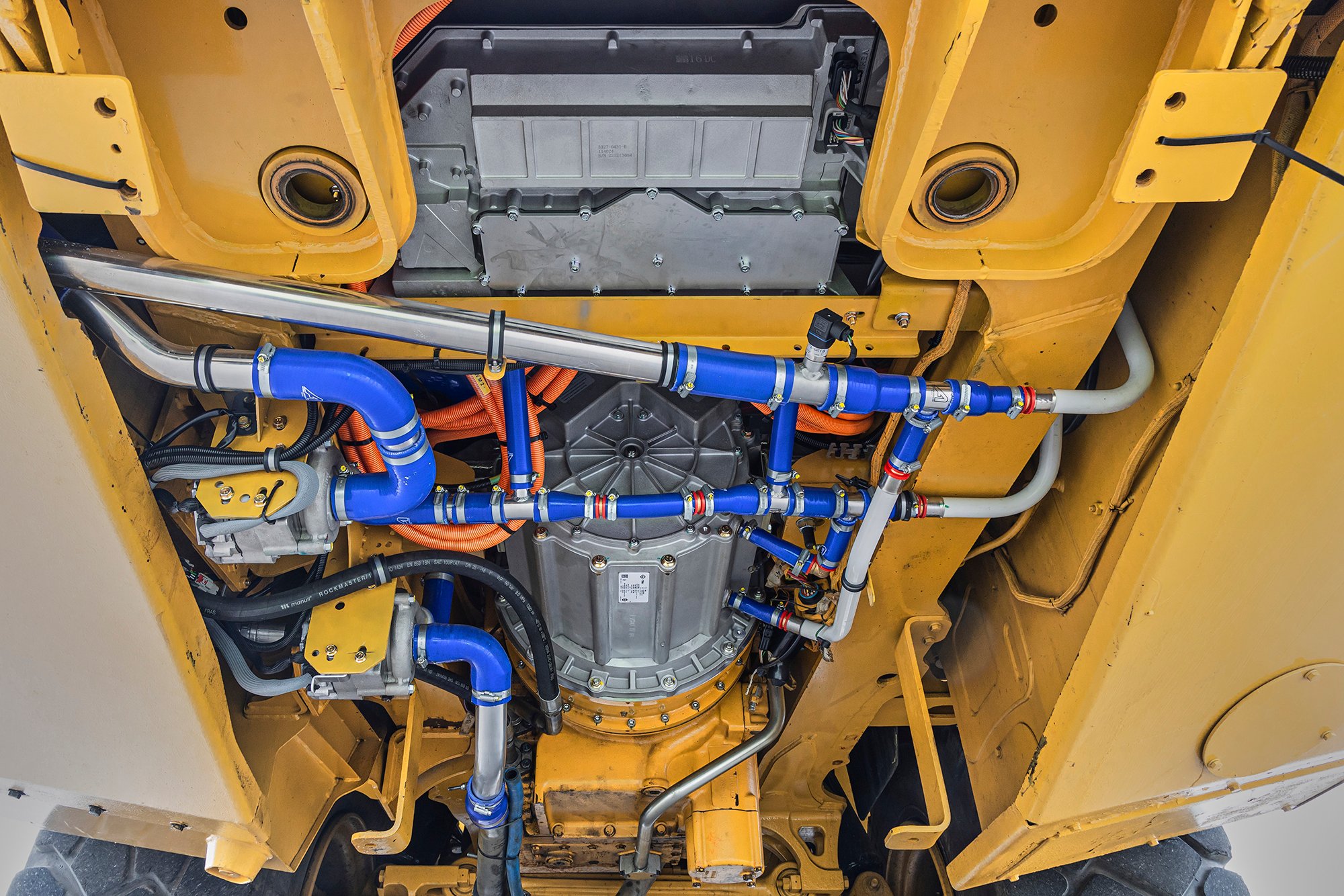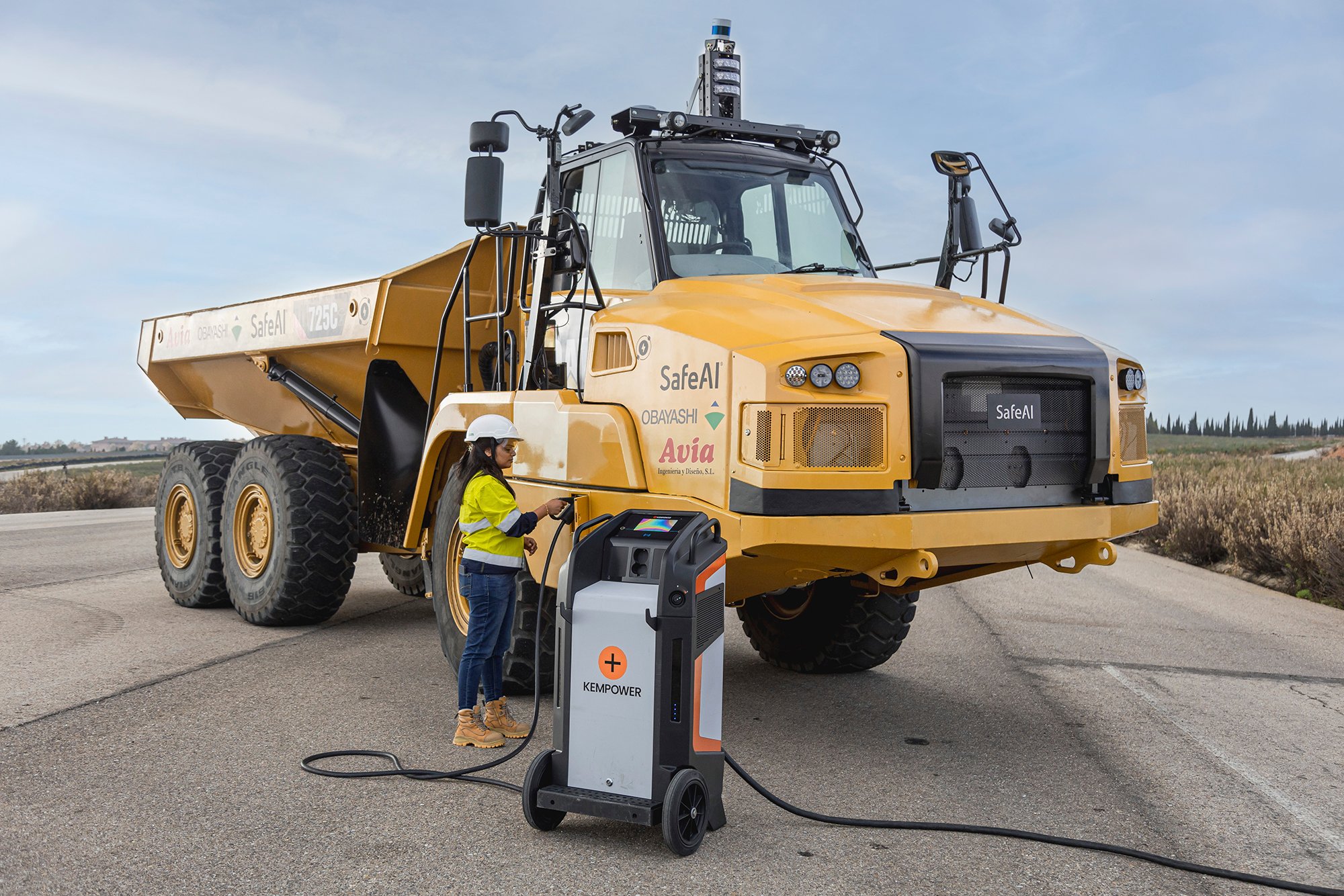
SafeAI Unveils First Robo-Electric Haul Truck

Working with Japanese construction company Obayashi Corporation, Santa Clara, California-based autonomous heavy equipment retrofitter SafeAI unveiled Tuesday, a Caterpillar 725 haul truck that is both driverless and runs on battery-electric power.
 Bibhrajit Halder, founder and CEO of SafeAI in front of Caterpillar 725 haul truck retrofitted to be autonomous and battery-electric.
Bibhrajit Halder, founder and CEO of SafeAI in front of Caterpillar 725 haul truck retrofitted to be autonomous and battery-electric.
“I think this was just the first demonstration that you can take an existing vehicle, make it fully retrofittable from the ground up.” said Bibhrajit Halder, founder and CEO of SafeAI in an interview.
We added the motor and battery, then we put autonomy on top, and this is to show to the world that this is possible. So this is really the first time our truck got retrofitted from grounds up, both for electric and autonomous.Bibhrajit Halder Founder and CEO of SafeAI
 SafeAI lidar and light unit mounted on top of the retrofitted Caterpillar 725 haul truck.
SafeAI lidar and light unit mounted on top of the retrofitted Caterpillar 725 haul truck. While SafeAI provided the autonomous technology, the electric powertrain was installed by AVIA Engineering, which specializes in integrating electrification into trucks.
 Undercarriage view of the electric drive system including the Dana drive inverter— the electrical connection between the batteries and the drive motor.
Undercarriage view of the electric drive system including the Dana drive inverter— the electrical connection between the batteries and the drive motor. “By retrofitting these vehicles using a 100% electric drive train, it allows companies to recycle their existing assets and use them in a better, more sustainable way. Our team, in collaboration with SafeAI and Obayashi, is proud to have successfully integrated a fully electric powertrain and is looking forward to seeing where this first step can take us,” said David Sanchez, owner and CEO of AVIA Engineering in a statement.
In ticking off the advantages of the marriage of autonomy with a battery-electric powertrain, SafeAI, Halder highlights safety, efficiency and sustainability.
 Autonomous-electric Caterpillar 725 haul truck's battery is recharged in the field using a portable charger.
Autonomous-electric Caterpillar 725 haul truck's battery is recharged in the field using a portable charger. As for sustainability, by adding a driverless, emission-free vehicle to a construction site, autonomy alone can boost environmental performance by up to 13%, and by swapping out diesel for electricity, operators can cut net life cycle emissions by over 60%, the company said.
Indeed, creating a longer-term cost-effective strategy for meeting sustainability goals is an important consideration for Obayashi Construction.
“The difference between the OEM approach and this initiative is that it puts the contractor in control. A retrofit approach allows contractors to proactively upgrade their vehicles to advance carbon neutral strategies,” said Sugiura Shinya, Business Innovation Division General Manager of Obayashi in a statement.
Concerning safety, Halder points out the combination of autonomy and an electric powertrain protect workers from potentially hazardous driving situations on a construction site and makes the vehicle more maneuverable, especially in tight spots.
For construction companies concerned with staying on budget, the twin technologies can be helpful in succeeding toward avoiding cost overruns.
“On the productivity side, there are two main parts, obviously on the energy efficiency you're getting the fuel efficiency, but also because this truck runs much tighter. That's because of the electrification,” explained Halder. “For autonomy, it is going to be on schedule and doing exactly what you wanted to do. Now you combine that you're getting about 20% more productivity.”
Achieving that combination had its challenges. Moving from design to production took about six months, as finding the right combination of electric motors and batteries was tricky, Halder revealed. Plus engineers had to figure out how to package both technologies into a brawny work truck.
“I think we did a lot of engineering ingenuity to make sure we packaged it properly. That includes how do you manage that in the heat and everything else going on?” said Halder. “I think the third thing that we realized was when you have an electric powertrain and autonomy the interaction has to work well.”
Now that engineers seemed to have figured out how to overcome those challenges, Halder says the goal is to build additional autonomous-electric work trucks.
The retrofitted Caterpillar 725 unveiled Tuesday is now on the job in Spain and will then be sent to work on a project in Japan later this year, said Halder. The company will then ramp up production to build the twin technology trucks for use in the mining industry, he said.
